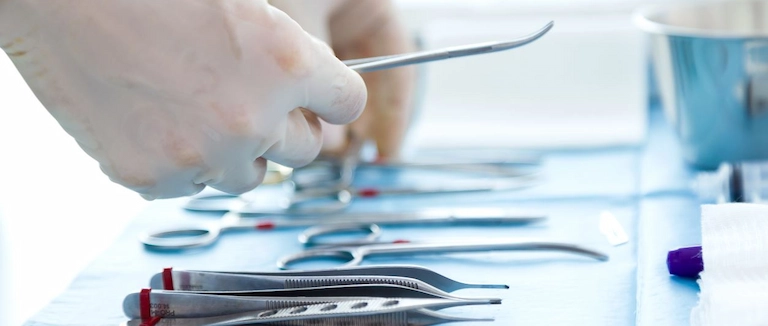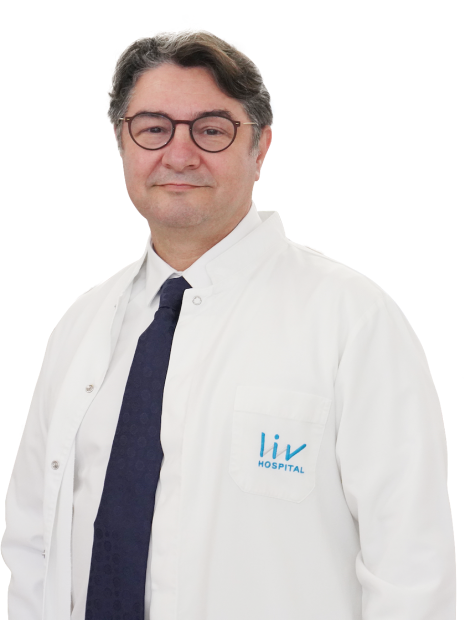Circumcision: Benefits, Procedure, and Health Advantages
Circumcision is the surgical procedure in which a portion of skin, called the foreskin, is removed from the tip of a male child's penis. This procedure has been supported by scientific research showing that circumcision can provide several medical benefits. Removing the foreskin helps keep the tip of the penis and the urinary opening cleaner, reducing the buildup of dirt and secretions in this area. Additionally, circumcision surgery may offer some protection against sexually transmitted infections by reducing the risk of infection.

What is Circumcision?
Circumcision is the surgical removal of the foreskin, the skin covering the tip of a boy's penis. This procedure is regarded as a religious obligation or cultural practice in many Islamic societies. Circumcision is typically performed by a specialist doctor under sterile conditions in a hospital or health center.
During circumcision surgery, it is essential to maintain cleanliness and prevent infection in the surgical area. The procedure is typically performed under local anesthesia to minimize pain or discomfort for the baby or child. After the circumcision, consistent and proper care of the area is crucial to reduce the risk of infection and promote healing.
What are the Methods of Circumcision Surgery?
Circumcision may be performed for religious, cultural, or health reasons, and there are several different surgical methods available. These techniques are generally classified based on the instruments used and the specific surgical approach.
Surgical methods involve removing the foreskin by cutting it with specialized surgical instruments.
- Classic method: In this technique, the foreskin is removed with a scalpel, and the edges are stitched together using self-absorbable sutures.
- Frenulotomy: In this method, the frenulum”a band of tissue connecting the foreskin to the head of the penis”is cut.
- Clamp method: In this technique, a specially designed clamp is used to cut the foreskin. The clamp restricts blood flow to the area, which helps minimize bleeding during the procedure.
- Non-surgical methods involve removing the foreskin without the use of traditional surgical instruments.
- Tissue adhesive: In this technique, a special adhesive is used to attach the foreskin to the head of the penis. The adhesive naturally dissolves within a few days.
- Laser: In this technique, the foreskin is removed using a laser. Some families choose laser circumcision based on the recommendation of their doctor.
- Other methods: Additional non-surgical techniques may involve scraping or burning the foreskin with a specialized device.

Where should circumcision surgery be performed?
Today, circumcision is most commonly performed by pediatric surgeons, urologists, or general surgeons. For maximum safety, the procedure is often carried out under general anesthesia.
Who Should Perform Circumcision Surgery?
Circumcision surgery should be performed by a specialized doctor or surgeon in a sterile, hygienic environment using proper medical equipment. Having a trained and experienced healthcare professional ensures the procedure is carried out safely and effectively. When circumcision is performed on children, it's particularly important to choose a specialist with experience in pediatric surgery, as these professionals are trained to address children's unique needs and can help ensure their comfort and well-being throughout the process.
What is the Recommended Age for Circumcision Surgery?
The recommended age for circumcision surgery is before 18 months or after 6 years of age. Surgeries performed before 18 months are generally preferred by pediatric surgeons and urologists because the child is not yet conscious and will not remember the procedure. After the age of 6, children are able to understand and process the experience. It is advised to avoid circumcision between ages 2 and 4, as children in this age range are conscious and may develop psychological issues related to the operation. Circumcision should be performed in fully equipped hospitals where emergency care is available.

What is the process of circumcision surgery?
Circumcision surgery is carried out in a sterile hospital or clinic setting and can be performed using either local or general anesthesia.
- Circumcision with local anesthesia: This is the most commonly used method, where a local anesthetic is injected into the circumcision area of the penis. This numbs the area so that no pain is felt during the procedure.
- Circumcision with general anesthesia: This approach is often preferred for young children. The patient receives an anesthetic that puts them to sleep, ensuring they do not feel pain or remember the procedure.
The main steps of circumcision surgery include the following:
- Anesthesia: The patient receives either local or general anesthesia before the procedure begins.
- Surgical preparation: The area of the penis where circumcision will be performed is thoroughly cleaned and sterilized.
- Removal of the foreskin: The foreskin is surgically removed using a specialized instrument.
- Bleeding control: The surgical site is monitored to ensure that any bleeding is managed and stopped as needed.
- Suturing: The foreskin is sutured with self-absorbable or dissolving sutures.
Is Anesthesia Applied in Circumcision Surgery?
Local anesthesia is commonly preferred for circumcision surgery. It numbs the surgical area, ensuring the child does not feel pain during the procedure and is comfortable throughout.
How Much Anesthesia Is Given During Circumcision Surgery?
The amount of local anesthesia administered during circumcision may vary based on the size of the surgical area, as well as the child's age and overall health. The specialist doctor or surgeon selects the appropriate dose according to each child's specific needs and condition.
What is the healing process of circumcision surgery?
The recovery time after circumcision surgery depends on the child's age and the surgical method used.
Circumcision in newborns: Healing typically occurs within 4-5 days. Mild swelling and redness may appear around the circumcision site, and a small amount of bleeding from the tip of the penis can occur, but this usually resolves on its own.
Circumcision in children: Healing typically takes 10-14 days. During this period, increased swelling and redness may occur at the circumcision site, along with a greater likelihood of minor bleeding from the tip of the penis. If this happens, dressings should be applied as instructed by your doctor.
During the healing process after circumcision surgery, consider the following recommendations:
- Use painkillers: Some pain or discomfort is normal after surgery. If needed, take painkillers as recommended by your doctor.
- Keep the penis area clean: Gently wash the area with soapy water several times a day.
- Bathing: Avoid bathing for 48 hours after surgery to promote proper healing.
- Avoid sexual intercourse: Sexual activity should be avoided for 4-6 weeks after surgery to allow for proper healing.
As with any surgery, circumcision may involve some risks. Potential complications can include infection, bleeding, injury to the head of the penis, and reactions related to anesthesia.
* Liv Hospital Editorial Board has contributed to the publication of this content .
* Contents of this page is for informational purposes only. Please consult your doctor for diagnosis and treatment. The content of this page does not include information on medicinal health care at Liv Hospital .
For more information about our academic and training initiatives, visit Liv Hospital Academy
Frequently Asked Questions
Is Circumcision Surgery Painful?
Circumcision surgery is usually performed under local or general anesthesia, so the child does not feel pain during the procedure. Mild discomfort may occur afterward but typically subsides within a few days.
How Long Is the Recovery Period After Circumcision?
The healing period varies by age. In newborns, recovery takes about 4–5 days, while in older children, it may take 10–14 days. Following the doctor’s care instructions ensures faster healing.
What Are the Health Benefits of Circumcision?
Circumcision may help improve genital hygiene, reduce the risk of urinary tract infections, and lower the risk of some sexually transmitted infections.
What Is Neonatal Circumcision?
Neonatal circumcision refers to circumcision performed on infants shortly after birth. It is common in many cultures and typically heals faster with fewer complications.
Who Should Perform Circumcision Surgery?
Circumcision should always be performed by a qualified surgeon or specialist, such as a pediatric surgeon or urologist, in a sterile hospital environment.
What Is the Recommended Age for Circumcision?
Experts recommend circumcision before 18 months or after 6 years of age. The 2–4 age range is usually avoided due to potential psychological effects in children who are conscious of the procedure.


